
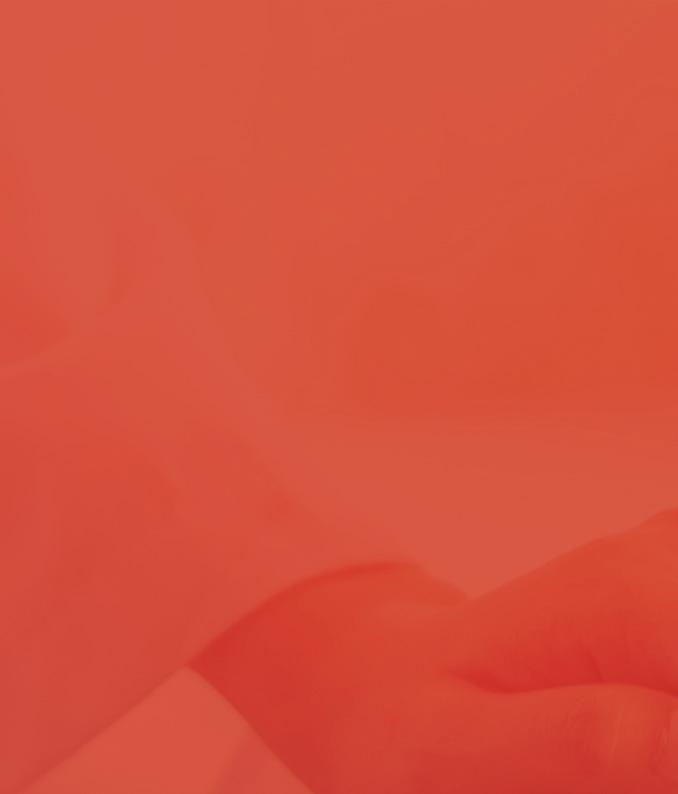





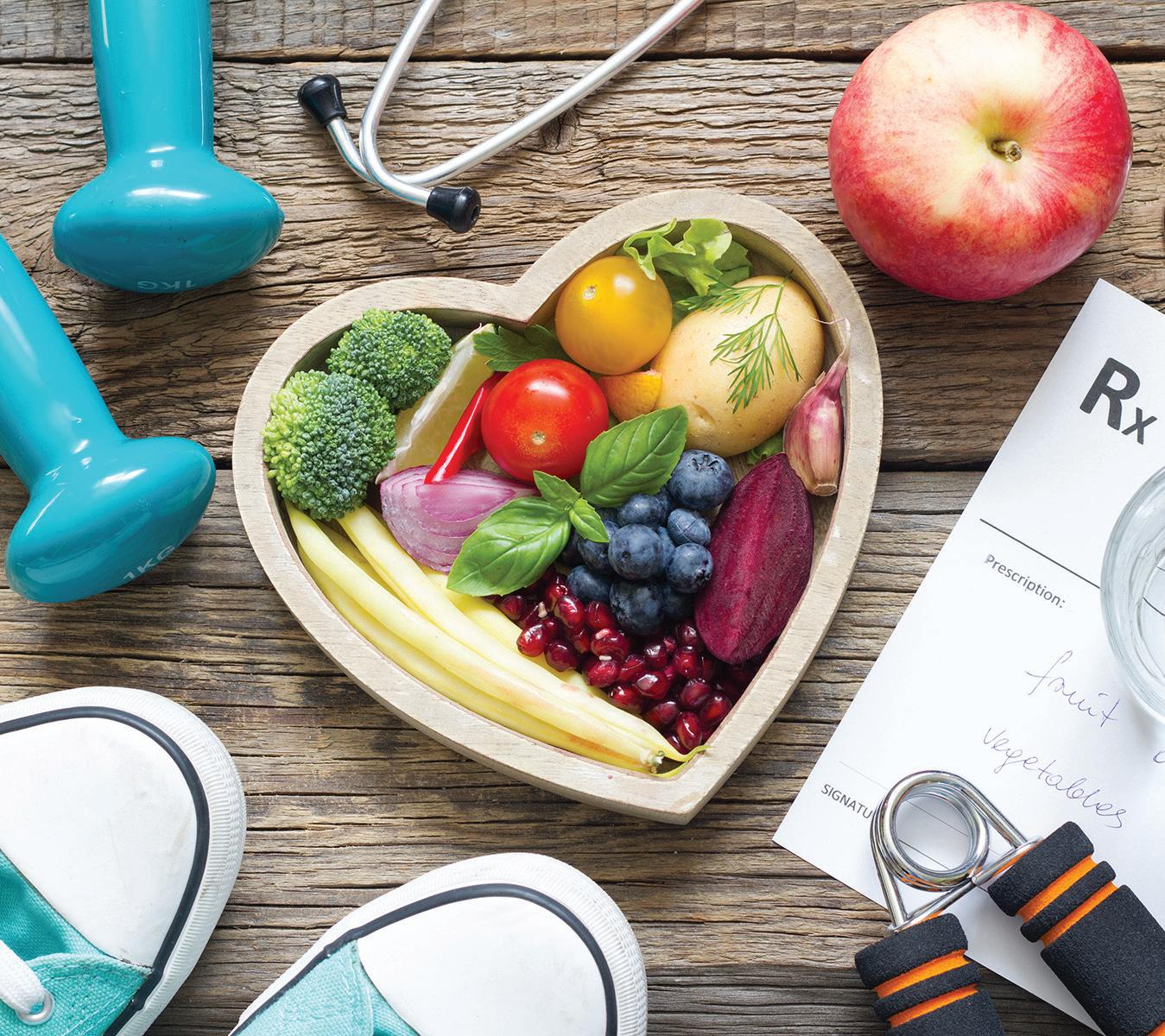











The ability to communicate is easily taken for granted. However, e ective communication skills do not necessarily last a lifetime, and many people may develop di culties with understanding words, speaking, reading, or writing.
Aphasia is a language disorder caused by damage to the area of the brain that controls language expression. Johns Hopkins Medicine says that aphasia can occur at any age, but more often a ects those over the age of 65. Many people are unfamiliar with aphasia, but it can be helpful to learn more about this condition. Here are seven things to know about aphasia, courtesy of Johns Hopkins and The National Aphasia Association.
1. Aphasia is caused by damage to the language-dominant side of the brain, which is usually the left side.
2. Stroke is one of the biggest contributors to the onset of aphasia. Other brain injuries, such as head trauma, brain tumors or infections in the brain, also may cause aphasia.
3. Aphasia may be mild or so severe it makes communication with an a ected person nearly impossible.
4. The condition can a ect mainly a single aspect of language, such as the ability to name objects or complete sentences. More often, though, it a ects multiple aspects of communication.
5. There are three main types of aphasia. Broca aphasia is sometimes called an expressive aphasia. People can communicate, but may eliminate words from their language, resulting in short, meaningful sentences. They usually can understand some speech of others. Wernicke aphasia is sometimes called receptive aphasia. People with this type speak in long, confusing sentences with extra words. They usually have di culty understanding others’ speech. Those with global aphasia have trouble with understanding and speaking.
6. Aphasia is more common than Parkinson’s disease, cerebral palsy or muscular dystrophy. Despite this, many people have never heard of the condition.
7. Improvement of conditions for those experiencing aphasia may be slow-going. Some people may improve over a period of years and even decades. If symptoms last longer than two or three months after a stroke, a complete recovery is improbable. Speech-language therapy, use of computers or pictures to express oneself, and group therapy often are treatment options.
Aphasia can be frustrating and scary for a patient and their loved ones. Depending on which areas of the brain are a ected, a treatment and therapy plan can be adapted to the person’s speci c needs.

Migraine headaches can be debilitating, result in lost hours at work and time spent away from friends and loved ones. Migraines are quite common, as studies estimate 12 percent of the United States population experiences them.
The Cleveland Clinic says researchers aren’t certain about what causes migraines, but studies indicate genetics play a role in their severity and frequency. Migraines occur when nerves in blood vessels send pain signals to the brain. This releases in ammatory substances into the head’s nerves and blood vessels. Migraines can cause severe, throbbing pain or a pulsing sensation, usually on one side of the head, states the Mayo Clinic. This is often accompanied by extreme sensitivity to light and sound, nausea and vomiting. Attacks may last anywhere from a few hours to several days. When su ering a migraine, people want to alleviate symptoms as quickly as possible. These options, courtesy of the Association of Migraine Disorders®, may be helpful when a migraine strikes.
Lifestyle choices that promote good health also can reduce the number of migraines a person has and lessen the pain. Taming stress and spending time in a calm environment may keep migraines at bay. Heating pads can relax tense muscles and warm showers may

be soothing. It’s important to maintain regular sleeping patterns and unwind at the end of the day. Eat a healthy diet and avoid any foods and beverages you’ve found trigger migraines. These may include wine, aged cheese and chocolate. Don’t skip meals, as fasting increases the risk of migraines, indicates the Mayo Clinic.
Preventive treatments aim to reduce severity and frequency of migraine attacks. Many of the options originally were designed for other ailments but have been used as “o -label” migraine treatments. These include:
• Antidepressants: Antidepressants stabilize the levels of neurotransmitters in the brain and may help with pain.
• Anti-seizure medications: These medicines are thought to calm hyper-excitable nerve cells in the brain.
• Botulinum toxin: This neurotoxin is used for the prevention of chronic migraines in adults. It is injected in key muscles of the head and neck to help block pain-signaling chemicals.
• Beta-blockers: Typically used for high blood pressure, beta-blockers a ect the blood vessels in the brain, make the nervous system less excitable and increase activity in the hypothalmus.

Certain treatments are used when migraines are about to occur or are occurring. These may be over-the-counter or prescription options.
• OTC: OTC pain killers like acetaminophen, aspirin and ibuprofen help some people who su er from migraines.
• Ca eine: Whether on its own or mixed with NSAIDs, ca eine in small amounts can be helpful in easing migraine symptoms.
• Triptans: Triptans target speci c
serotonin receptors on the brain’s blood vessels and nerve endings. They also narrow blood vessels to decrease in ammation and pain.
• Gepants: CGRP is a protein found in the peripheral and central nervous system. Levels of CGRP are higher during a migraine attack. Gepants target CGRP and block it from attaching to its receptor in the nervous system.
Nerve blocks, eye drops and even neuromodulation also may be options for people experiencing intense or frequent migraines. It’s important to speak with a doctor about the treatments available.
ancer is often discussed in ways that note the statistics regarding new diagnoses of the disease. That’s understandable, as the World Health Organization notes there were 20 million new cases diagnosed in 2022, when nearly 10 million individuals lost their lives to the disease. But it’s equally important, particularly for newly diagnosed patients and their families, to recognize how many survivors of the disease are currently walking among us and, in many instances, living normal and ful lling lives. Estimates from the WHO suggest roughly 53.5 million people across the globe were alive within ve years of receiving a cancer diagnosis. Such a statistic highlights the incredible progress cancer researchers have made in combatting the disease and can serve as inspiration to the millions of people who will receive a diagnosis and begin treatment in the year ahead.

Medical emergencies happen every day. Thankfully, many medical emergencies are successfully navigated and those at the center of such incidents typically return to normalcy.
Knowledge is everything when faced with a medical emergency. Emergency situations that a ect heart health are often navigated thanks to devices known as AEDs. Knowledge of AEDs and recognition of why they’re such vital components of medical emergency response protocols can save lives.
The American Heart Association notes an automated external de brillator (AED) is a lightweight and portable device that delivers an electric shock to the heart through
the chest when the device detects an abnormal rhythm. The shock delivered by the AED returns the rhythm to its normal pace.
The AHA notes AEDs help people who experience sudden cardiac arrest, which is often deadly if not treated immediately. Sports fans may recall an incident in January 2023 that played out on national television during Monday Night Football. In that situation, Bu alo Bills safety Damar Hamlin went into cardiac arrest on the eld after making a tackle against the Cincinnati Bengals. Those in the stadium and millions more watching at home looked on in fear and uncertainty as Hamlin laid on the eld
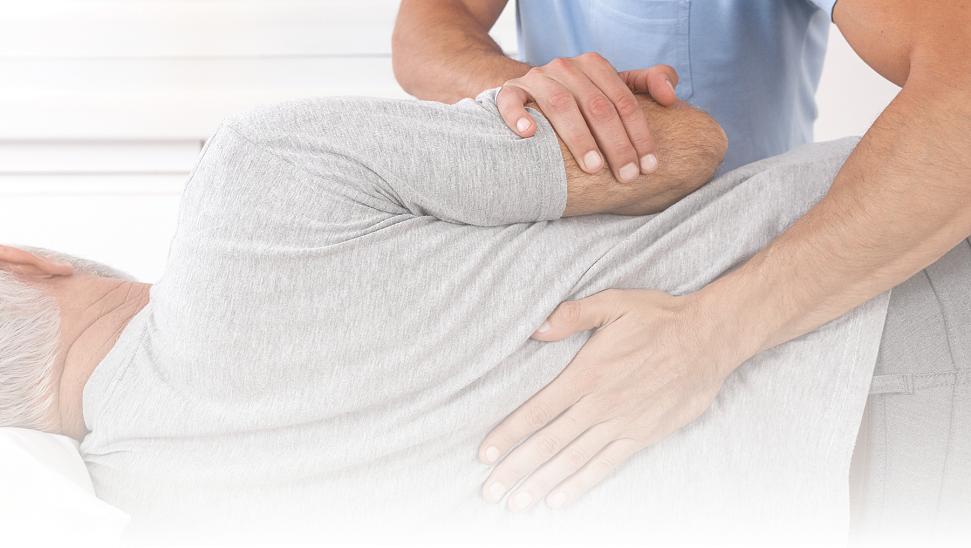
for 10 minutes. It was later revealed that an AED was utilized to restore Hamlin’s heartbeat on the eld before he was taken away by an ambulance. The instance involving Hamlin, who has since fully recovered and returned to play for the Bills, underscores the signi cance of AED training and the bene ts of having a readily accessible AED.
The AHA notes AEDs were designed to be used by the general public so anyone with access to the device can save a life when a person goes into cardiac arrest. Various professionals, including non-medical personnel like ight attendants and some security guards, are trained to use an AED. But anyone can bene t from such training, which might just save a life.
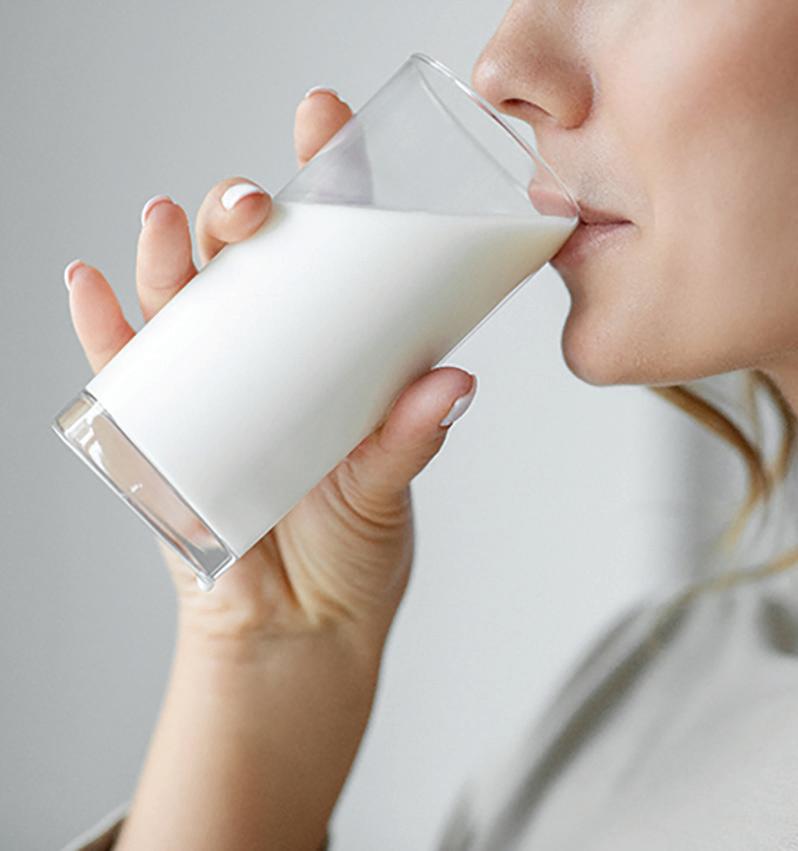


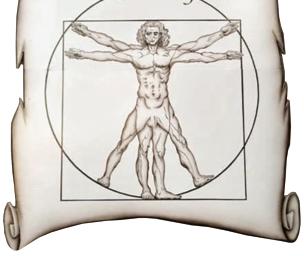
Wider availability of AEDs remains a point of emphasis for many both within and outside the medical community. Educators and coaches remain among the most vocal advocates for AEDs within schools and in places where athletes routinely compete. The AHA recommends AEDs be placed near elevators, cafeterias, main reception areas, and on walls in well-tra cked corridors. Educating individuals, including young athletes, about the location of AEDs and how to use them can be a lifesaving preventive measure.
AEDs also can typically be found in the vehicles of rst responders, including police o cers, re ghters and EMTs.
The AHA o ers CPR and AED training to individuals within the United States, and information about such sessions can be found at heart.org/CPR. Individuals in Canada also can access such training by visiting the Canadian Red Cross at redcross.ca.
AEDs save lives, and anyone can learn to use these invaluable devices.
rinking milk is a popular way to consume the amount of dairy recommended for a healthy diet. Milk is a rich source of 13 essential nutrients that can boost the immune system and fuel the body. Milk notably contains vitamin D and calcium, which helps maintain strong bones and can reduce the risk for a bone-thinning disease known as osteoporosis. Milk also contains vitamins A and B as well as potassium and protein. Milk helps keep teeth strong and healthy as well. The United States Department of Agriculture says that each person’s recommended intake of dairy depends on his or her age, gender, height, and other factors. Generally speaking, toddlers and children should consume between one and 2.5 cups of milk per day. Adults can bene t from about three cups per day. A cup is equal to 8 ounces. Health experts advise choosing nonfat or low-fat versions of milk and additional dairy products, as they are much more heart-healthy than full-fat options. Too much saturated fat in one’s diet can lead to high cholesterol and a greater risk for heart disease. If the idea of downing three glasses of milk is a turn-o , milk can be incorporated into recipes, such as smoothies, where its taste and texture is less prominent. Cheese and yogurt also count. Eight ounces of yogurt or 11⁄2 ounces of hard cheese is equivalent to one cup of milk in terms of nutrition, says a2 Milk®, a company that produces milk that may be easier on digestion. Individuals who have a lactose intolerance can choose milk products that do not contain lactose.

ime spent soaking up the summer sun is one of the things that makes the season so appealing. Warm outdoor air has a calming e ect that can make anyone feel more relaxed and comfortable.
As good as warm summer sun can feel, overexposure to the sun can be dangerous. The World Cancer Research Fund reports there were more than 330,000 new cases of skin cancer diagnosed across the globe in 2022. A signi cant percentage of skin cancer cases can be prevented, and prevention is a multifaceted process that includes skin care self-examinations. Self-exams do not take up much time, and individuals can speak with their physicians about how frequently they should check their skin for signs of skin cancer. The U.S. National Library of Medicine o ers the following instructions for how to conduct a skin self-exam.
characterizes certain moles as “ugly duckling moles.” These unique moles look and feel di erent from nearby moles and may be indicative of skin cancer. Speak with a dermatologist if a self-exam uncovers the presence of moles with uneven edges or di erences in colors or asymmetric shapes. Moles that look di erent from one side to the other also should be brought to the attention of a dermatologist. Moles that do not stop bleeding or will not heal also merit examination by a skin care professional.
When the time comes to conduct the exam, the USNLM recommends following these steps:

• Choose the right time to examine your skin. The USNLM recommends conducting a skin exam after bathing. Women who routinely conduct breast self-exams can check their skin at this time as well.
• Use a full-length mirror. It’s not always easy to examine skin throughout the body. But signs of skin problems can occur anywhere on the body, including areas that might be hard to see without help. If possible, conduct a self-exam of the skin in front of full-length mirror in a brightly lit room.
• Identify what you’re looking for. The USNLM notes you should be looking for any new skin markings. This includes bumps, moles, blemishes, and changes in skin color.
• Pay close attention to preexisting moles. A potential sign of skin cancer includes moles that change over time. Examine preexisting moles to see if they have changed in size, texture, color, and shape.
• Look for unusual moles. The USNLM
- Look closely at your entire body, both front and back, in the mirror.
- Check under your arms and on both sides of each arm. Be sure to examine the backs of your upper arms, which can be hard to see.
- Bend your arms at the elbow, and examine both sides of your forearm.
- Examine the tops and palms of your hands.
- Examine the front and back of both legs.
- Examine your buttocks and between your buttocks.
- Examine your genital area.
- Examine your face, neck, the back of your neck, and scalp. Use both a hand mirror and full-length mirror, along with a comb, to see areas of your scalp.
- Examine your feet, including the soles and the spaces between your toes.
- Ask a person you trust to help examine hard-to-see areas.
Skin cancer poses a formidable threat, but many cases of the disease are preventable. Routine skin self-exams are a vital component of skin cancer prevention.


It is health that is real wealth and not pieces of gold and silver. Mahatma Gandhi




nacking is a routine part of many people’s lives. In fact, a 2023 study published in the journal Nutrients estimated that adults consume one to three snacks each day, and that said consumption ultimately accounts for roughly 20 percent of their energy intake.
Such frequent and routine snacking could be detrimental if people aren’t opting for nutritious foods when eating between meals. With that in mind, the following are four fruits and vegetables that feature a low-calorie, nutritious pro le, which makes them ideal foods to reach for the next time hunger pangs demand a between-meal bite.
1. Apples: There might be something to the adage, “An apple a day keeps the doctor away.” Apples are rich in antioxidants, which have been touted for their
anti-in ammatory properties as well as their role in building a strong immune system. Chlorogenic acid is an antioxidant found in apples that researchers have found can help to lower a person’s risk for diabetes, while the catechins in apples have been linked to a reduced risk for heart disease and cancer. Web-

•Need to see a Doctor? •Dentist? •Go to Work? •Go Shopping? “Our Friendly, Personable, and Courteous Drivers will get you to your destination in a safe and timely manner!”

Buses Are Outfitted With: •Handicap Accessible •All Buses Are Wheelchair Equipped •Comfortable Environment
County-Wide Transportation Every City and Village
MD notes that the ber in apples helps people feel fuller after eating, a bene t most easily attained when eating apples with the skin on.
2. Bananas: Bananas make a perfect snack because they’re easily portable and loaded with nutritional value. The Harvard T.H. Chan School of Public Health notes that a medium ripe banana contains just 110 calories and zero grams of fat. The potassium in bananas can promote heart health by enabling the heart to beat regularly, and this popular fruit also has been characterized as bene cial for digestive health.
3. Broccoli: Broccoli might not nish in the top 10 if people were asked to name the foods they’re most likely to eat as a snack, but this nutrient-rich vegetable makes for a healthy between-meal bite. Broccoli can be eaten raw or cooked, and the U.S. Department of Agriculture notes a single cup of cooked broccoli contains just 55 calo-
ries. Within that small serving snackers can get roughly 134 percent of their daily value of vitamin A, 112 percent of their daily value of vitamin C and 92 percent of their daily value of vitamin K.
4. Carrots: Carrots are another accessible, nutritious vegetable to consider the next time hunger pangs hit between meals. WebMD notes a single serving of carrots contains just 25 calories but is loaded with vitamins and minerals, including vitamin A (73 percent of the recommended daily value), vitamin K (9 percent) and vitamin C (5 percent). The ber in carrots can promote healthy digestion, and the wealth of antioxidants like carotenoids and anthocyanins found in carrots help to ght o free radicals that can increase a person’s risk for disease.
Snacks are a part of many people’s daily routines. Finding the right foods to snack on can make a world of di erence for people aspiring to live healthier.





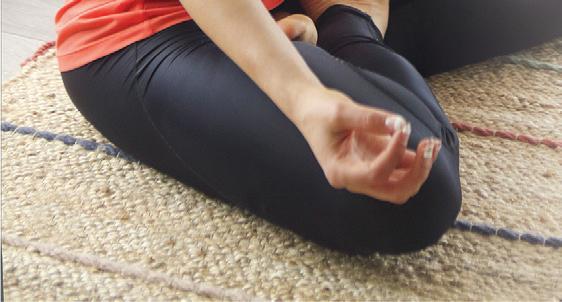

Meditation has gained traction in recent years as an e ective means to promoting personal wellness, and those considering the practice should know that it does not require a signi cant time commitment. The Mayo Clinic notes meditation has been practiced for thousands of years. Perhaps the practice has proved so enduring because of the myriad emotional and physical bene ts it o ers, which the Mayo Clinic notes include self-awareness, improved mood, a lower resting heart rate, and improved sleep. The amount of time required to meditate depends on the individual and the type of meditation he or she practices (the Mayo Clinic cites guided meditation, mantra meditation, mindfulness meditation, and Quigong as some popular ways to meditate), but Verywell Mind reports that experts typically recommend meditating for somewhere between ve and 45 minutes each day.
Watermelon is widely considered a summertime treat that’s particularly refreshing on a hot day. A staple at backyard barbecues, watermelon makes a great appetizer, side dish and even dessert.
Watermelon also can make for a nutritious addition to a backyard barbecue menu. Those who want something nutritious to eat alongside less healthy fare like hamburgers and hot dogs can consider the many nutritional bene ts of watermelon.
• Watermelon is low in calories. The Mayo Clinic notes that one cup of watermelon is 46 calories. That makes watermelon an ideal low-calorie dessert, particularly when compared to other treats, including ice cream. The calorie count for a single cup of ice cream varies by avor, but the United States Department of Agriculture notes one cup of vanilla ice cream contains 274 calories, while one cup of chocolate ice cream is 286 calories. Watermelon is a low-calorie dessert alternative to ice cream that can be especially appealing after eating popular backyard barbecue fare.
• Watermelon promotes hydration. The Harvard T.H. Chan School of Public Health notes that drinking enough water helps to regulate body temperature, lubricate the joints, prevent infections, and promotes proper organ function. Water also delivers nutrients to cells. Come summertime, it’s easy to fall victim to dehydration, but consuming
Uwatermelon can help to prevent that. The Mayo Clinic notes watermelon is 92 percent water, which can help people remain hydrated on hot summer days spent outside.
• Watermelon is a good source of vitamins C and A. The National Institutes of Health notes that human beings are unable to synthesize vitamin C endogenously, which means they must get this crucial vitamin from the foods they eat. Watermelon contains 14 percent of the recommended daily value (DV) of vitamin C per USDA dietary guidelines, making it a worthy addition to anyone’s diet. Watermelon also contains 5 percent of the recommended DV of vitamin A, which the NIH notes is important for normal vision, immune system health, reproduction, and growth and development.
• Watermelon does not contain any fat, cholesterol or sodium. It’s not only what’s in watermelon that makes it so healthy, but what’s not in it as well. Unlike other popular desserts, such as ice cream, watermelon contains no fat, cholesterol or sodium. Opting for watermelon over more traditional desserts can help people lower their fat consumption, reduce their cholesterol and avoid overconsumption of sodium.
Watermelon makes for a refreshing treat on a hot summer day. But watermelon provides a host of additional nutritional bene ts as well, making it an ideal food for your next backyard barbecue.


sage of over-the-counter headache medicines might be widely associated with adults, but children get headaches as well, and parents may wonder if youngsters can lean on the same remedies their parents look to when seeking relief. Nationwide Children’s Hospital notes rest and relaxation is the best way to treat a headache, but parents also can utilize OTC medications like ibuprofen (Motrin®, Advil®), acetaminophen (Tylenol®) or naproxen (Aleve®) to help mitigate the symptoms of headache in children. Children’s versions of popular OTC headache medicines such as Motrin® can be utilized. Parents are urged to read all product labels and speak with their children’s pediatricians before administering children’s headache medicines. Such discussions are particularly important before giving older kids and adolescents OTC medications that are not designated as children’s remedies.



team is made up of more than just exper ts, we strive to treat each resident and guest as family from the moment they step through our doors
24 Hour Nursing Care - Comprehensive Rehabilitation - Physical Therapy - Occupational Therapy - Speech Language Pathology - IV Therapy - Memor y Care Unit - Wound Care - Transpor tation to Dialysis - Cardiopulmonar y Program
Nutritional Ser vices





Achieving and maintaining a healthy weight is a lifelong processs. Children tend to be so physically active and grow at such a consistent pace that it’s easier for them to consume a high-calorie diet without becoming overweight. That’s generally not the case after adolescence, and it might be particularly di cult for seniors to avoid gaining weight.
In a 2020 interview with Tufts Medicine, Jillian Reece, a bariatric dietitian at Tufts Medical Center, noted that a person’s basal metabolic rate slows downs with aging. The basal metabolic rate indicates the rate at which the body uses energy while at rest. As that rate slows down, body weight can increase. But seniors should know they aren’t helpless against nature and Father Time. In fact, there is much aging adults can do to maintain a healthy weight throughout their golden years.
• Limit portion sizes when eating. Controlling portion sizes is easier said than done, particularly for seniors who dine out with frequency. When dining out, seniors can order o the appetizer menu instead of ordering an entrée, especially when visiting an establishment known for its hefty portions. At home, pay attention to serving size data on product labeling. If necessary, measure portions when eating foods such as cereal so the portion you eat re ects the serving size noted on the box.
• Eat breakfast each morning. Seniors who skip breakfast, which may be more likely upon retiring, could be doing their waistlines a notable disservice. A 2017 statement from the American Heart Association noted that several large, long-term, prospective, observational studies have found an association between breakfast con-
sumption and lower risk of obesity. The less structured pattern of retirement living may compel some seniors to skip breakfast, but committing to a morning meal can help keep o extra pounds.
• Commit to routine exercise. Diet can go a long way toward helping seniors maintain a healthy weight. However, diet is not the only area where seniors can help their waistlines. Routine physical activity can help seniors maintain muscle mass and make it easier to be more mobile. Staying mobile can help keep pounds o , as a sedentary lifestyle is one of the more notable risk factors for overweight and obesity. The National Institute on Aging recommends seniors aim for at least 150 minutes of moderate-intensity aerobic activity each week. Moderate-intensity aerobic activities are those that raise the heart rate and help seniors break a sweat, such as walking, jogging, swimming, and cycling.
• Make a concerted e ort to remain hydrated throughout the day. The Cleveland Clinic notes that age-related body composition changes make seniors particularly vulnerable to dehydration. An aging body does not demand water like it once did, so it’s easy for seniors to forget to hydrate because they don’t feel thirsty. But remaining hydrated is important for seniors looking to maintain a healthy weight because dehydration can mimic symptoms of hunger. Seniors may reach for snacks feeling they’re hungry when all they might need is a glass of water to hydrate.
A healthy weight can allow seniors to live life to the fullest. Various strategies can help seniors achieve a healthy weight.

Physical activity is a valuable tool in the ght against chronic disease and other conditions. In fact, the Cleveland Clinic highlights physical activity among its nine ways to prevent disease in an e ort to live a long and rewarding life.
Children, adolescents, young adults, and even men and women in middle age may not face too many physical hurdles when they try to exercise, but seniors are not always so lucky. Aging men and women with mobility issues may wonder if they can reap the rewards of physical activity, and thankfully there are many ways to exercise even if getting up and going isn’t as easy as it might have been in years past. Sometimes referred to as “aerobic exercise” or simply “cardio,” cardiovascular exercise is an umbrella term that encompasses a wide range of physical activities that raise the heart rate and improve endurance. Seniors with mobility issues can look to various forms of cardio for inspiration as they seek to be more physically active without compromising their overall health.
• Walk your way to a healthier you. Walking is a form of cardiovascular exercise that is ideal for older adults with mobility issues because it need not be physically demanding and it’s safe to walk just about anywhere. Walking in a place such as a local park can be particularly good for older adults because they can take periodic breaks on benches if aches, pains or sti ness is a ecting their ability to keep moving.
• Take up swimming. Swimming might be tailor-made for seniors with mobility issues because it’s a great workout

and exercising in water tends to be less taxing on muscles and joints. The Cleveland Clinic notes that swimming promotes heart health, strengthens the lungs, helps to burn calories, and builds muscle, among other bene ts. And many seniors nd swimming is just as fun in their golden years as it was in their youth, which means aging adults might not face problems with motivation when the time comes to get in the pool.
• Use an exercise bike or portable pedal exerciser. Cycling is a wonderful exercise but one that seniors with mobility issues may feel is no longer possible. If doctors advise against riding a traditional bike, an exercise bike or portable pedal exerciser can provide many of the bene ts of cycling without as great a risk for accident or injury. A portable pedal exerciser can be carried to a park, where seniors can still spend time in the great outdoors, which is one of the most appealing reasons to get on a bike and go.
• Take beginner yoga or tai chi. HelpGuide.org notes that gentle yoga or tai chi can help to improve exibility and reduce stress and anxiety. Though yoga and tai chi can provide as much demanding physical activity as individuals allow, beginner classes in each discipline don’t require much movement but do provide enough for seniors hoping to be less sedentary.
Even seniors with mobility issues can nd safe and e ective ways to be more physically active. Prior to beginning a new exercise regimen, seniors with mobility issues are urged to discuss activities with their physicians.


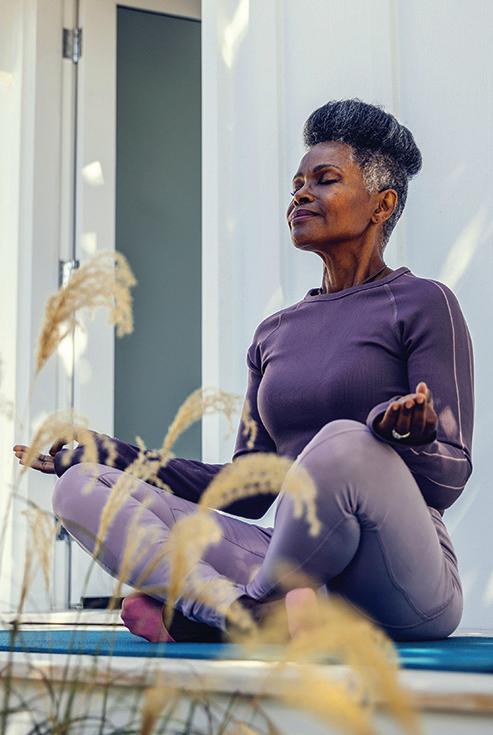

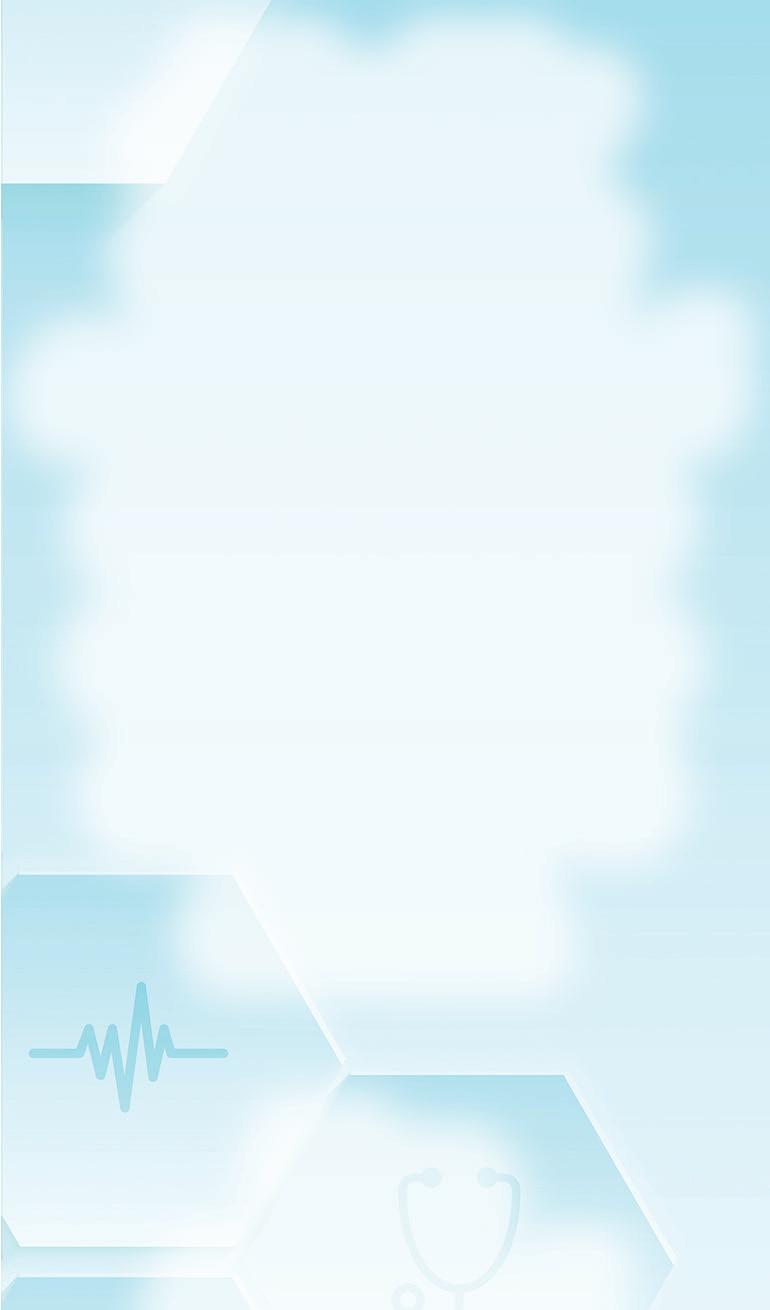
A healthy attitude is contagious but don’t wait to catch it from others. Be a carrier. Tom Stoppard





Mental health is now discussed more openly than it once was. Mental illness or issues that a ected mental health used to be stigmatized, and many people su ered in silence and might not have gotten the help they needed.
The National Institute of Mental Health reports more than one in ve adults in the United States lives with a mental illness. Mental illnesses include many di erent conditions that may vary in degree of severity, from very mild to severe. The Centre for Addiction and Mental Health advises that, in any given year, one in ve Canadians experiences a mental illness as well. Such statistics highlight just how common mental illnesses are.
The NIMH notes self-care plays a significant role in maintaining mental health and supporting recovery. People can safeguard their mental health in many ways, and doing so will improve their overall health as well.
• Spend time in nature. Nature can have a calming e ect on people. Going for a walk can help tame stress and break patterns of negative thinking. In Japan, the concept of forest bathing is said to improve mental health. Forest bathing involves spending time in a forest or another green area experiencing the di erent sounds, sights and smells that nature o ers.
• Set boundaries. B2B Reviews says 12 percent of U.S. workers were fully
remote in August 2023. Estimates suggest that number may have increased to around 14 percent by 2025. Working from home can make it more challenging to set rm divisions on time spent working and for home life. Establishing boundaries means not being available 24/7 for calls or emails and not feeling guilty about taking time away from work.
• Get regular exercise. Just 30 minutes of exercise each day can get feelgood endorphins owing through the body to boost mood and bodily health.
• Get more sleep. Adults generally need between seven and nine hours of sleep for optimal health and reaching deep sleep phases, says the Mental Health Foundation. Creating consistent sleep routines that include going to bed and waking at the same time each day; avoiding screens before bed; and avoiding ca eine or vigorous exercise late in the day can help improve sleep.
• Try relaxing activities. Relaxing activities can include reading, listening to music, meditation, or low-stress crafts and hobbies. Make time each week for these calming pursuits.
• Socialize with others. Socialization provides opportunities to see others and talk about anything you want to get o your chest. People feeling stress or anxiety might think they

No one wants to imagine a day when their vision might abandon them, but diminished eyesight is a common occurrence that a ects people of all ages and from all walks of life. A 2022 report from the World Health Organization indicated that at least 826 million people have distance- or near-vision impairment that could be addressed with an appropriate pair of eyeglasses. Those people are among the estimated 2.2 billion people who currently have issues that a ect their ability to see.
Cataracts are a common and treatable vision problem. Access to cataract treatment is limited in various countries. In fact, a 2021 study published in the journal Lancet Global Health found that 94 million people ages 50 and over have vision impairment or blindness that could be corrected through access to cataract surgery. Surgery might not even be considered if people are not rst aware of the symptoms of cataracts, which can manifest in various ways.
• Blurry vision: The American Academy of Ophthalmology notes that blurriness may be associated with an assortment of vision problems, including cataracts. Blurry vision makes it di cult to see clearly or sharply, and cataracts are characterized by cloudiness that a ects the natural lens of the eye. The blurriness associated with cataracts is the result of a breakdown of proteins in the lens of the a ected eye, according to the AAO.
• Seeing double: Double vision also is symptomatic of various vision issues, including cataracts. The AAO notes that when a person is seeing double, he or she may be seeing two, often overlapping, images of a single object.
• Sensitivity to light: The AAO
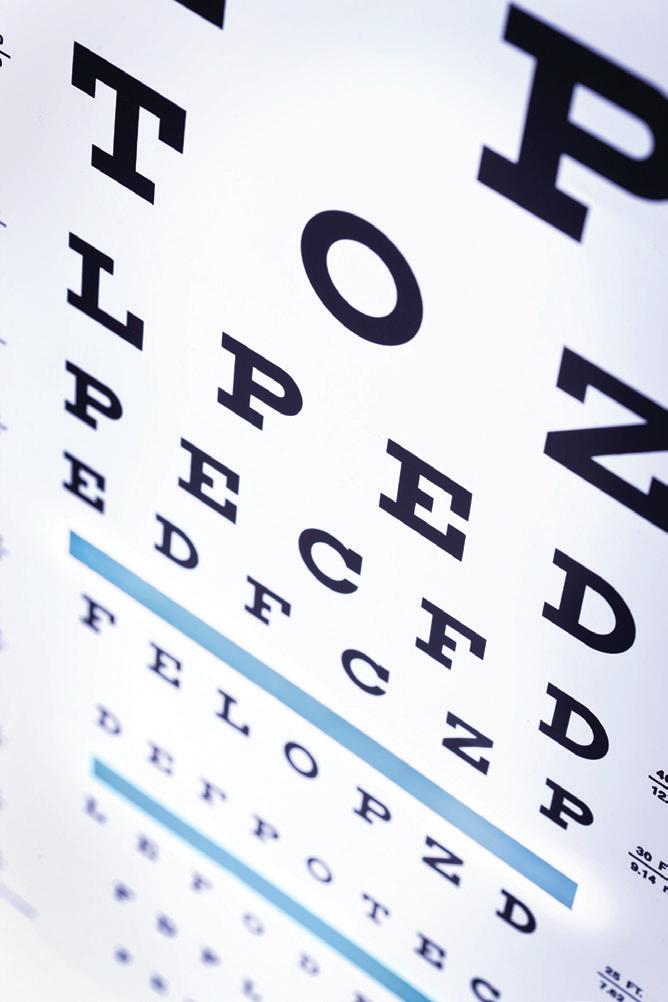
notes a need to shield eyes from light to prevent eye pain could indicate a sensitivity to light that is characteristic of cataracts. This sensitivity may be especially noticeable when confronted by oncoming headlights at night.
• Di culty seeing at night: The AAO reports that this symptom is often characterized by di culty seeing in dark conditions that can make it harder to adjust to seeing when going from a well-lit space into darkness. That adjustment also may take longer in people experiencing cataracts. Some people may not be able to see at all in dimly lit conditions.
• Seeing faded colors: Bright colors that appear faded or yellow is another symptom of cataracts.
Cataracts compromise vision, but it’s important that people recognize there are e ective treatments for this condition. More information is available at aao.org.


troke is one of the leading causes of death across the globe. In a recent examination of death statistics, the World Health Organization found that stroke was responsible for the third most deaths in 2021. Notably, the WHO analysis found that stroke was the leading cause of death in upper-middle-income countries. In that same year, stroke was the second leading cause of death in low-income countries and the third leading cause of death in low-middle-income countries. Stroke was the third-leading cause of death in high-income countries, which includes the United States and Canada. The threat posed by stroke is indeed signi cant, and McLaren Health Care cites the following statistics in an e ort to raise awareness of this potentially deadly but often preventable disease.
• 15 million people have a stroke

across the globe each year
• Three in ve, or 60 percent, of strokes occur in people under age 70
• 16 percent, or roughly one in six, of strokes occur in people under age 50
• Five million people die from stroke each year
• Four in ve strokes are preventable
• 38 percent of people are aware of all major stroke symptoms
Raising awareness of stroke and its symptoms can spur immediate action that can greatly reduce the likelihood of negative outcomes, which can include death, paralysis and brain damage.
Adults are urged to contact their physician to identify their risk factor for stroke and to learn how to spot its symptoms and what should be done should any signs appear
continued from page 10
are alone. But having conversations with others can illustrate that these are common problems and there are solutions. Sometimes just talking about an issue can help you overcome it.
• Use your vacation time. Too many people are not using enough of their deserved and accrued time o . A survey from the nancial services com-
pany Sorbet found that 62 percent of Americans don’t use all of their paid time o . A Pew Research Center survey found that nearly half of U.S. employees with paid time o take less time than their employers o er. Failure to take time o is a recipe for burnout. Mental health should be a priority.
Safeguarding mental health can involve various self-care techniques that anyone can employ.
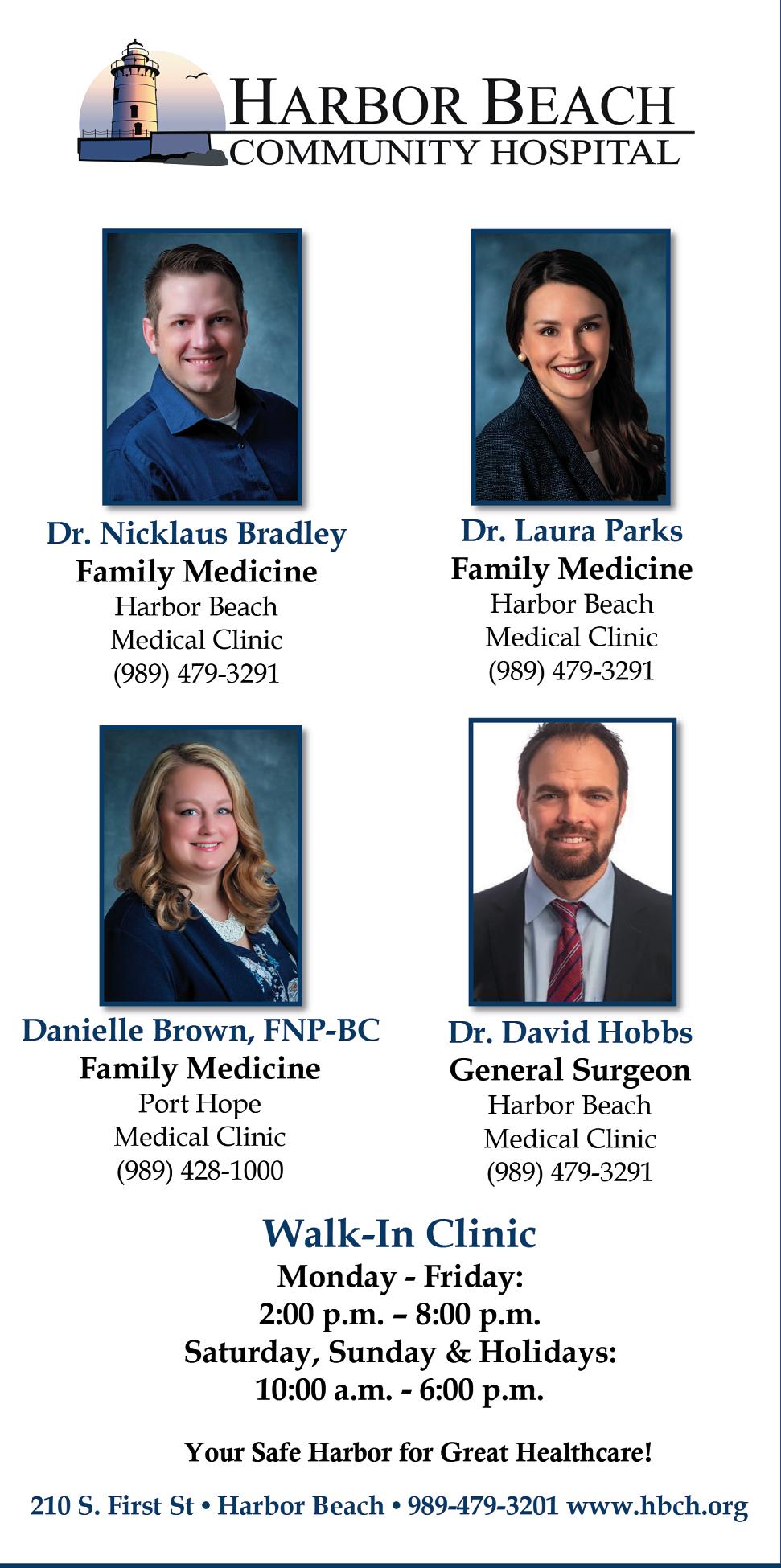


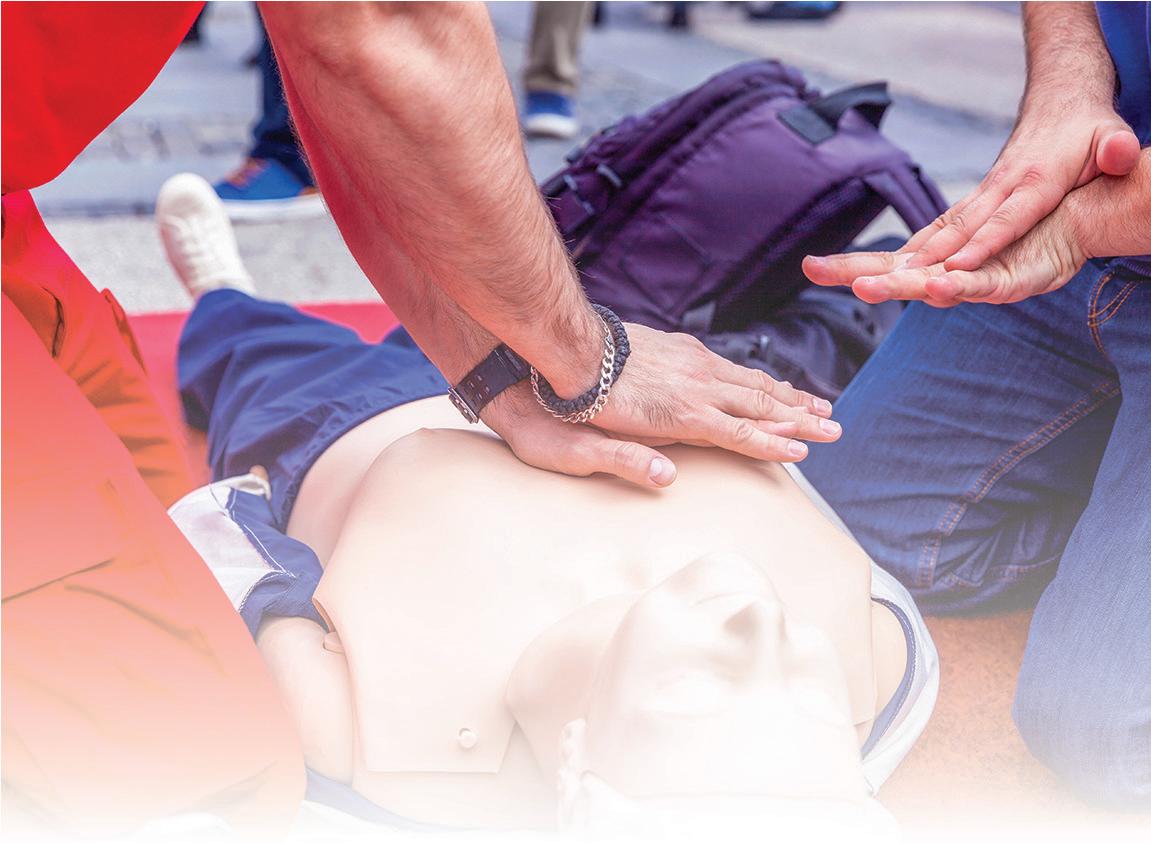


Knowing how to respond when confronted with a medical emergency is vital knowledge that can save lives, including one’s own. Emergency medical personnel like EMTs and rst responders in law enforcement are trained in skills like CPR, which the American Heart Association notes can double or triple a person’s chances of survival when he or she goes into cardiac arrest. That’s just one of many notable statistics related to CPR and underscores just how bene cial it can be for more people to learn this valuable, often lifesaving procedure.
• The AHA reports that more than 356,000 out-of-hospital cardiac arrests (OHCAs) occur annually in the United States. Such emergencies predominantly occur in homes/residences, but cardiac arrest can a ect anyone at any time and at any location. Learning CPR may help to save a life at home or in public.
• Nearly 90 percent of all OHCAs end in death. That gure could decrease dramatically if more people learned CPR.
• The 2023 Heart Disease and Stroke Statistics report from the AHA indicates that just 40 percent of people
who experience an OHCA receive bystander CPR.
• OHCA occurs more frequently in the workplace than people may realize. According to the United States Occupational Safety and Health Administration, roughly 10,000 incidents of cardiac arrest occur in the workplace in the U.S. each year.
• Automated external de brillators (AEDs) are lifesaving devices that help to return heart rhythms to normal when individuals go into cardiac arrest. Despite the lifesaving potential of AEDs and prevalence of workplace instances of cardiac arrest, data from the AHA indicates that only 50 percent of people can locate an AED at work.
• The AHA reports that 55 percent of workers in corporate o ces, the hospitality sector, education, and industry/labor cannot get rst aid or CPR or AED training at work.
• The AHA trains more than 22 million people across the globe in CPR each year.
CPR is a potentially lifesaving procedure that anyone can learn. More information about CPR and where to seek training is available at cpr.heart.org.